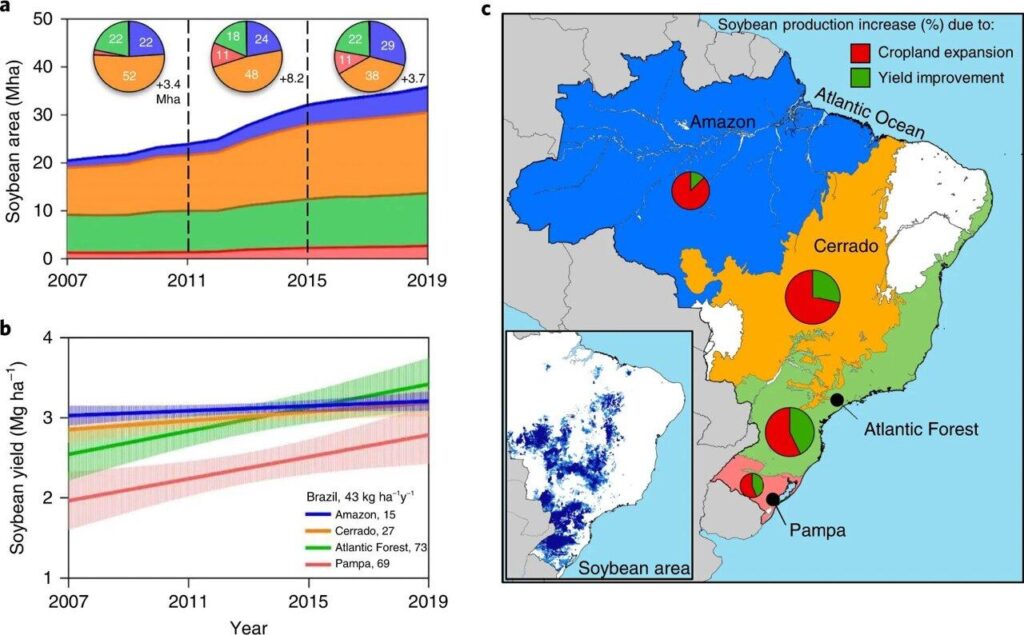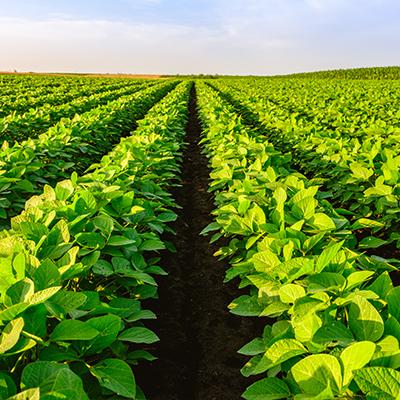Brazil’s Agricultural Evolution: Projections for Future Soybean Productivity
Rain in Mato Grosso, dust in Rio Grande do Sul—these are Brazil’s twin omens, often mirrored in headlines about the nation’s soybean harvests. The 2025 season gave global traders more than just a crystal ball prediction: it anchored Brazil firmly at the apex of world soybean production. This country is forecasted to bring in a record 6.15 billion bushels, jumping up by 13% compared with last year—a streak that some private experts believe might be slightly understated. Such numbers place Brazil ahead of all other nations, both as producer and exporter.
But beyond this celebratory yield sits another story; regional swing factors remain prominent. The heartland—Mato Grosso—is not just producing soybeans but churning out bushels at an average of 58 per acre now, marking a full quarter leap above last season’s average there. By contrast, southern states saw yields wilt under relentless heat and parched winds. Rio Grande do Sul can only muster about 37 bushels per acre this cycle; it’s not so much abundance as attrition that defines their return on seeds sown.
This divergence across states sometimes feels like referencing football match scores—regional weather patterns decide who wins each year more than technology alone does.
Across the board though? National yield averages have risen to roughly 52 bushels per acre for soybeans—a subtle jump from a year prior but an echo back to seasons when sharp climatic oscillations brought less certainty into planning cycles.
Why has Brazilian productivity kept climbing—not tumbling even when challenged by drier months or logistical bottlenecks along Amazon-bound roads? Technology is part of the answer: satellites mapping chlorophyll density guide irrigation decisions while agronomists leverage field sensors to adjust planting intervals. Some producers are quietly testing digital management tools originally designed for other beans (even coffee) but reworked for soy fields instead. With government incentives funneled toward rural infrastructure improvements—including solar-powered road lighting and expanded broadband—the pixelated view from satellites increasingly aligns with tactile progress on farms themselves.
Export numbers highlight another layer of future promise or warning: the foreign trade sector could ship an extraordinary 108.5 million tons of beans abroad during this window—a modest uptick yet pivotal given global market tensions now common as morning news reports. Asian and European buyers—in some cases acting like chess grandmasters studying drought trends—closely monitor Brazilian port activity week by week.
Projections stretch beyond next harvest into what happens if farming methods shift fundamentally within two decades rather than incrementally between seasons.
- Biofuels mandates already drive expansion—but they also accelerate ecosystem conversion rates beyond riverbanks long protected by traditional rules-of-thumb conservationists value above most policies.
- Talk circles through boardrooms suggesting “regenerative agriculture” may soon become mandatory vocabulary among large-scale operations wishing continued international relevance—and subsidies shift too frequently these days toward projects promising not growth alone but recovery measured against deforestation baselines set years ago.
Rural education also moves up agendas sideways—weaving through infrastructure debates somewhat unexpectedly—with calls for direct public investment swelling between US$100–150 billion annually via coalitions attempting something bolder: closing knowledge gaps rather than field drainage alone aids long-term crop health strategies supported across generations (and indeed political regimes).
Strong harvests foster optimism; sudden reversals grow caution among stakeholders whose livelihoods depend on rainfall timing almost mythological in reputation here.
Farmers have one eye on soil nitrogen metrics; another glancing toward city financial centers tracking commodity prices before breakfast meetings begin.
Sometimes future projections forget romantic realities underpinning old farming wisdom—the “full moon planting nights” still whispered fondly around kitchen tables after dusk chores finish late during March busy periods.
Policy suggestions often leapfrog events rather than track them stepwise:
- Open-source agricultural research goes public domain
- Transparency demands ramp up (with larger firms scrutinized keenly)
- Local suppliers gain time-limited advantages that international financiers scrutinize lightly right now
With every new report showing double-digit percentage swings—from expectation-busting highs down towards brief valleys defined by untimely El Niño quirks—the cognitive map farmers use blends tradition and digital dashboards unevenly.
No straight line connects satellite image clarity directly to export tonnage happiness either—it’s swerves caused by fuel regulation adjustments or OPEC-like commodity alliance chatter around port fees that sometimes affect net results just as much as upgrades to hardier cultivars do over five-year spans.
In-between dry facts sketched out vividly each spring stands one unchanging certainty: agricultural fortune here dances chaotically with climate, bureaucracy feels slower-moving compared with weather fronts shifting atop vast fields before anyone eats their lunch under half-built canopy shelters near newly-planted groves abutting soybean stretches without obvious boundaries visible unless you see them from high above—or deep within village oral histories where crop calendars intermingle with childhood stories told differently every season anew.




